In December 1788, the astronomer royal, Dr Nevil Maskelyne FRS, wrote effusively to 38-year-old Caroline Herschel congratulating her on being the "first women in the history of the world" to discover not one, but two new comets. No woman since renowned Greek mathematician Hypatia of Alexandria had had such an impact on the sciences. Her celebrity would, as the director of the Paris Observatory, Pierre Méchain, noted, "shine down through the ages".
Nevertheless, observed Dr Maskelyne with jocular good humour, he hoped Caroline did not feel too isolated among the male community of astronomers in Britain. He hoped she would not be tempted to ride off alone into outer space on "the immense fiery tail" of her new comet. "I hope you, dear Miss Caroline, for the benefit of terrestrial astronomy, will not think of taking such a flight, at least till your friends are ready to accompany you." Or at least until her achievements were recognised by his colleagues in the Royal Society. Curiously, no such recognition was immediately forthcoming.
All this year, and all round the globe, the Royal Society of London has been celebrating its 350th birthday. In a sense, it has been a celebration of science itself and the social importance of its history. The senior scientific establishment in Britain, and arguably in the world, the Royal Society dates to the time of Charles II. Its early members included Isaac Newton, Edmond Halley, Robert Hooke, Thomas Hobbes, Christopher Wren and even – rather intriguingly – Samuel Pepys. But amid this year's seminars, exhibitions and publications, there has been one ghost at the feast: the historic absence of women scientists from its ranks.
Although it was founded in 1660, women were not permitted by statute to become fellows of the Royal Society until 285 years later, in 1945. (An exception was made for Queen Victoria, who was made a royal fellow.) It will be recalled that women over the age of 30 had won the vote nearly 30 years earlier, in 1918. Very similar exclusions operated elsewhere: in the American National Academy of Sciences until 1925; in the Russian National Academy until 1939; and even in that home of Enlightenment science, the Académie des Sciences in France, until 1962. Marie Curie was rejected for membership of the Académie in 1911, the very year she won her second Nobel prize.
It is also true that by the turn of the 21st century, there had been more than 60 distinguished women fellows of the society. Many have become household names, such as the brilliant crystallographer Dorothy Hodgkin, who famously won a Nobel prize in 1964, and whose whirling portrait by Maggi Hambling (1985) now hangs in the National Portrait Gallery. Her heroic life – she mapped the structure of penicillin and then dedicated 35 years to deciphering the structure of insulin – is told in a superb, biography by Georgina Ferry.
Yet in Victorian Britain, the very idea of women doing serious science (except botany and perhaps geology) was widely ridiculed and even botany (with its naming of sexual parts) could be regarded as morally perilous. Mary Anning (1799-1847), the great West Country palaeontologist, struggled for years to have her discoveries – such as the plesiosaurus – recognised as her own.
In March 1860, Thomas Henry Huxley FRS, famed as "Darwin's bulldog", wrote privately to his friend, the great geologist Charles Lyell FRS: "Five-sixths of women will stop in the doll stage of evolution, to be the stronghold of parsonism, the drag on civilisation, the degradation of every important pursuit in which they mix themselves – intrigues in politics and friponnes in science."
This can be taken as typical of certain Victorian assumptions, including the idea that physiologically the female brain simply could not cope with mathematics, experimental proofs or laboratory procedures. Certainly compared with their literary sisters, the scientific women of the 19th century still appear invisible, if not actually non-existent. What female scientific names can be cited to compare with Jane Austen, Fanny Burney, the three Brontë sisters, George Eliot or Harriet Martineau?
Yet my re-examination of the Royal Society archives during this 350th birthday year has thrown new and unexpected light on the lost women of science. I have tracked down a series of letters, documents and rare publications that begin to fit together to suggest a very different network of support and understanding between the sexes. It emerges that women had a far more fruitful, if sometimes conflicted, relationship with the Royal Society than has previously been supposed.
It is at once evident that they played a significant part in many team projects, working both as colleagues and as assistants (though hitherto only acknowledged in their family capacities as wives, sisters or daughters). More crucially, they pioneered new methods of scientific education, not only for children, but for young adults and general readers. They also played a vital part as translators, illustrators and interpreters and, most particularly, as "scientific popularisers".
Indeed, the Royal Society archives suggest something so fundamental that it may require a subtle revision of the standard history of science in Britain. This is the previously unsuspected degree to which women were a catalyst in the early discussion of the social role of science. More even than their male colleagues, they had a gift for imagining the human impact of scientific discovery, both exploring and questioning it. Precisely by being excluded from the fellowship of the society, they saw the life of science in a wider world. They raised questions about its duties and its moral responsibilities, its promise and its menace, in ways we can appreciate far more fully today.
The first woman to attend a meeting of the Royal Society was Margaret Cavendish, the Duchess of Newcastle, in May 1667. There were protests from the all-male fellows – Pepys recorded the scandal – and the dangerous experiment was not repeated for another couple of centuries. But Margaret could take advantage of her position, being the second wife of William Cavendish FRS, a member of one of the great aristocratic dynasties of British science. She knew many of the leading fellows, such as Robert Boyle and Thomas Hobbes. On this occasion, she witnessed several experiments of "colours, loadstones, microscopes" and was "full of admiration", although according to Pepys, her dress was "so antic and her deportment so unordinary" that the fellows were made strangely uneasy. But this may have been for other reasons.
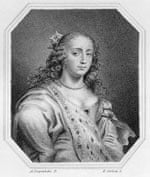
Margaret later raised issues that have become perennial. She mocked the dry, empirical approach of the fellows, violently attacked the practice of vivisection and wondered what rational explanation could be given for women's exclusion from learned bodies. She questioned the Baconian notion of relentless mechanical progress, in favour of gentler Stoic doctrines, in her polemical Observations on Experimental Philosophy (1668). She wrote a lively Memoir, in which she gave an interesting definition of poetry as "mental spinning", being useful to the scientific mind. She also produced arguably the first-ever science-fiction story, The Blazing World (1666), which considered the alternative futures of science. All this earned her the sobriquet "Mad Madge".
The idea of animals having rights within any humane society was recognised early by female scientists. Anna Barbauld, the brilliant young assistant to Joseph Priestley FRS, the great 18th-century chemist, noticed the distress of his laboratory animals as they were steadily deprived of air in glass vacuum jars, during the experiments in which he first discovered oxygen (1774). Accordingly, she wrote a poem in the voice of one of Priestley's laboratory mice and stuck it in the bars of the mouse's cage for Priestley to find the next morning. She entitled it: "The Mouse's Petition to Dr Priestley, Found in the Trap where he had been Confined all Night".
For here forlorn and sad I sit,
Within the wiry Grate,
And tremble at the approaching Morn
Which brings impending fate…The cheerful light, the Vital Air,
Are blessings widely given;
Let Nature's commoners enjoy
The common gifts of Heaven.The well-taught philosophic mind
To all Compassion gives;
Casts round the world an Equal eye,
And feels for all that lives.
The notion that animals and, indeed, all life-forms on Earth, had a right to "the common gifts of heaven" can be seen as the first stirrings of the whole environmental movement and the demands it now makes upon science and industry.
By contrast, the first original paper that might be considered as part of a scientific research programme conducted by a woman and published in the Royal Society's journal, Philosophical Transactions, concerned extraterrestrial phenomena. It was by Caroline Herschel in August 1786, gravely entitled "An Account of a new Comet, in a letter from Miss Caroline Herschel to Mr Charles Blagden MD, Secretary to the Royal Society". Caroline was sister to William Herschel FRS, the great Romantic astronomer who discovered Uranus and first proposed the existence of galactic systems, such as Andromeda, beyond our own Milky Way. But Caroline's speciality was discovering new comets, of which she found eight at a time when fewer than 30 were known. Her brother was immensely proud of her, built her special telescopes and helped her to obtain the first state salary for a female astronomer in Britain.
Even so, William carefully annotated Caroline's historic paper: "Since my sister's observations were made by moonlight, twilight, hazy weather, and very near the horizon, it would not be surprising if a mistake had been made." But it had not. Caroline also kept an observational journal for more than 30 years. This gives not only astronomical data, but emotional data too: it's an invaluable early view of a brother-sister scientific team at work, including their many trials and heartaches. It is one of the earliest records of how science actually gets done, its secret tribulations as well as its public triumphs.
Women also saw the educational possibilities of science in a broader context than their male colleagues. Jane Marcet, encouraged by her husband, Alexander Marcet FRS, published the first truly bestselling scientific populariser for young people in 1806. Breezily entitled Conversations in Chemistry, in which the elements of that science are familiarly explained and illustrated by Experiments, it eventually sold as many books as the poetry of Lord Byron (also an FRS). One of its 15 later editions inspired the great 19th-century physicist Michael Faraday FRS to begin his career in science. He started reading the book in 1810, while still working as an apprentice bookbinder and later recalled: "I felt I had got hold of an anchor in chemical knowledge and clung fast to it."
Marcet reinvented the dialogue form as a series of imaginary scientific lessons between a teacher "Mrs B" (possible based on a famous astronomer tutor, Margaret Bryan) and her two young women pupils. Emily is observant and rather serious, while Caroline is mischievous but inventive (useful qualities for a young scientist). Caroline continually tempts Mrs B into the more imaginative aspects of science.
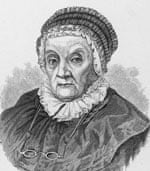
While discussing the composition of water, Mrs B points out that oxygen has "greater affinity" for other elements than hydrogen. Caroline instantly grasps the romantic possibilities of this: "Hydrogen, I see, is like nitrogen, a poor dependent friend of oxygen, which is continually forsaken for greater favourites." Mrs B starts to reply — "The connection or friendship as you choose to call it is much more intimate between oxygen and hydrogen in the state of water" – then sees where this is going and hastily breaks off: "But this is foreign to our purpose."
With a suppressed giggle, Caroline has discovered "sexual chemistry" and the reader will remember forever the composition of a water molecule: two hydrogen atoms in unrequited love with an oxygen atom (H2O). Caroline adds suggestively: "I should extremely like to see water decomposed…" Jane Marcet went on to develop the "Conversations" brand in a series of other books on physiology, botany, natural philosophy and other scientific topics of the day.
By using dialogue, the "Conversations" brought science popularising a step closer to fiction. Indeed, the most universal of all science fiction novels, Frankenstein, or the Modern Prometheus, was largely inspired by the chemical lectures of Sir Humphry Davy FRS. It was written by a teenage Mary Shelley, who attended Davy's lectures at the newly founded Royal Institution (which encouraged women members) when she was only 14. Published six years later in 1818, this extraordinary novel of ideas first raised the question of scientists' social responsibility for their discoveries and inventions.
Its cruder and more sensational stage adaptations, starting in the 1820s, also popularised the idea of the "mad scientist", one of the most powerful of all stereotypes. Equally, the term "Frankenstein's monster" is still frequently used to refer to any scientific advance, particularly in medicine or biology, that is thought to threaten humanity (stem cell research or GM crops). This is a double-edged propaganda weapon, inciting hysteria as much as rational caution and discussion. But Mary Shelley's creation has proved how vital it is for science to engage with public fears, as well as fantasies.
The work itself inspired at least one remarkable scientific spin-off, Jane Loudon's witty novel The Mummy!, published in 1827. Though the title, complete with exclamation mark, gives away the basic plot, the novel is far from anti-scientific. Paradoxically, it celebrates a brilliant array of futuristic inventions and technologies, such as centrally heated streets, cheap, compressed-air balloon travel, houses moved by railway and gas-illuminated safety hats for ladies. After this "wild and strange story", as she called it, Jane Loudon went on to find more conventional fame as the playful author of The Young Naturalist, the first of many scientific books for children.
At the very time these novels were making their impact, astronomer John Herschel FRS, the son of William, and a future secretary of the Royal Society, was writing a series of historic letters on a new but crucially related field: the public understanding of science. Unusually, his correspondent was a woman, Mary Fairfax Somerville. Their subject was the possibilities of "popularising" the new cosmology of the great French astronomer Pierre-Simon Laplace, whose work, Mécanique céleste, was regarded as second only to Newton's Principia.
Born in 1780, Mary Somerville was the brilliant and charming Scottish wife of William Somerville FRS. She moved freely in Victorian scientific circles and was a friend of the Herschels, Faraday, Charles Babbage FRS, Jane Marcet and Ada Byron. Ada, incidentally, was the poet's beautiful, headstrong daughter, a considerable mathematician in her own right. She had first explored the theories of Babbage concerning his famous "analytical engine", by adding her own highly original but technical commentary to a review of his work (which she translated from the French). Though rightly credited with a share in inventing the modern computer, Ada never risked producing a piece of popular science of the sort Mary Somerville was considering.

During an unhappy first marriage, Mary had taught herself mathematics and had studied both astronomy and painting. She first visited the Herschels' telescopes at Slough in 1816. She described herself as "intensely ambitious to excel in something, for I felt in my own breast that women were capable of taking a higher place in creation than that assigned to them in my early days, which was very low". Her first plan was to be a painter.
In 1828, she was challenged by Lord Brougham to produce a popular summation of the new French astronomy for his philanthropic Society for the Diffusion of Useful Knowledge. After immense and covert labour ("I hid my papers as soon as the bell announced a visitor, lest anyone should discover my secret"), she completed an outstanding translation and interpretation of Laplace's difficult astronomical book on the structure and mathematics of the solar system, retitling it The Mechanism of the Heavens (1830). Her unscientific friend, novelist Maria Edgeworth, described Mary admiringly: "She has her head in the stars, but feet firm upon earth… intelligent eyes… Scotch accent… the only person in England who understands Laplace."
The translation had originally been intended as a much shorter and simpler work. But now, John Herschel encouraged Mary to continue with the full text, but recommended an extended and popular introduction. "The attention of many will be turned to a work from your pen, who will just possess enough mathematical knowledge to be able to read the first [introductory] chapter, without being able to follow you into its applications… were I you, I would devote to this first part at least double the space you have done… I cannot recommend too much, clearness, fullness and order in the exposé of the principles," he wrote to her in February 1830. Shrewdly, Herschel urged her to continue to think like a painter, to sketch in firm "outlines", to "illustrate" vividly, to consider the overall composition: "As a painter you will understand my meaning."
This long, fluent introductory essay, "A Preliminary Dissertation", virtually free of any mathematical notation, used brilliant explanatory analogies and metaphors to describe how our solar system was formed and controlled by gravity. While the main translation became the standard textbook for science postgraduates at Cambridge (unheard-of for a woman author), the "Preliminary Dissertation made her famous with a general reading public. Again encouraged by Herschel, she republished it separately in 1832 and it continued to be widely read for the next 50 years.
Maria Edgeworth singled out its exemplary quality as popular science. "The great simplicity of your manner of writing, I may say of your mind, particularly suits the scientific sublime – which would be destroyed by what is commonly called fine writing. You trust sufficiently to the natural interest of your subject, to the importance of the facts, the beauty of the whole, and the adaptation of the means to the end…" Mary's sense of wonder made every reader "feel with her".
Mary Somerville then set out to write a completely original book, On the Connexion of the Physical Sciences in 1834. In it, she surveyed the whole field of contemporary sciences – chemistry, astronomy, physics – and drew attention to the unity of their underlying principles and methodology. Nothing like this had previously been attempted. As a result of a positive review by William Whewell FRS, the future master of Trinity College, Cambridge, the inclusive term "scientist" was coined. Amazingly, the word had not existed before 1834. This book ran to 10 editions and shaped the progressive idea of science for more than half a century. Physicist James Clerk Maxwell FRS wrote in 1870: "It was one of those suggestive books which put into definitive, intelligible and communicative form the guiding ideas that are already working in the minds of men of science, so as to lead them to discoveries, but which they cannot yet shape into a definitive statement."
Mary Somerville went on to write books about the new geography and the ever-expanding world of the microscope: Physical Geography in 1848 and Molecular and Microscopic Science in 1869 (written in her late 80s). Her autobiography, Personal Recollections, was published posthumously in 1873. Throughout her life, she supported women's suffrage (her signature was the first on JS Mill's petition to Parliament), campaigned against vivisection and against slavery in America.
She is now largely remembered because she had an Oxford college named after her in 1879. But in her time she was the greatest of all 19th-century women science writers, known as "the Queen of science" and elected honorary fellow of the Royal Astronomical Society (1835) along with Caroline Herschel. If she never entered into the Royal Society in person, her fine marble bust by Chantrey did so. It was first installed in the Great Hall and now resides in the research library of the Royal Society, flanked by Faraday and Darwin.
Most important, Mary Somerville became an outstanding model for a later generation of younger women in science. This was notably true of the first great American woman astronomer, Maria Mitchell. Born in 1818 on the remote whaling-station of Nantucket, Maria had a Quaker upbringing, where her scientific interests were encouraged by her schoolmaster father. Three years after her discovery of a new comet in 1847, she was elected first woman member of the American Association for the Advancement of Science, aged only 32.
Modestly revelling in her newfound celebrity, Maria then toured all the great observatories of Europe, subjecting their various astronomers to her candid, Nantucket eye and salty humour. She visited Greenwich Observatory and the Royal Society, bringing with her as a calling card the first known photograph of a star. For the most part, she was enthusiastically received, especially by the kindly John Herschel, though she was "riled" by Whewell's chauvinist teasing while dining at Trinity College high table. She was also amazed to be told by Sir George Airy FRS, the British astronomer royal: "In England, there is no astronomical public and we do not need to make science popular."
Undaunted, Maria pressed on to meet Mary Somerville, the great object of her tour, who now lived in Rome. She was disconcerted to find the Vatican observatory closed to women after dark, a distinct setback for a professional astronomer. ("I was told that Mrs Somerville, the most learned woman in all Europe, had been denied admission – she could not enter an observatory that was at the same time a monastery.") But she was captivated by Mary Somerville, both by her directness and by her fantastic range of interests.
"Mrs Somerville's conversation was marked by great simplicity, with no tendency to the essay style. She touched upon the recent discoveries in chemistry, of the discovery of gold in California, of the nebulae, of comets, of the satellites, of the planets…" To Maria's satisfaction, she also "spoke with disapprobation of Dr Whewell's attempt to prove that our planet was the only one inhabited by reasoning beings…"
Maria later wrote an essay in Mary Somerville's praise. Like her heroine, Maria identified with the anti-slavery cause and the female suffragist movements. But being a generation younger, Maria Mitchell was far more assertive than Mary Somerville about the vital importance of women actually doing science. In fact, she took the Royal Society's motto, Nullius in verba ("Take nobody's word for it") to have a particular relevance to the value of science for women. Too often, and for too long, those "words" had been male.
"The great gain would be freedom of thought. Women, more than men, are bound by tradition and authority. What the father, the brother, the doctor and the minister have said has been received undoubtingly. Until women throw off this reverence for authority they will not develop. When they do this, when they come to the truth through their investigations, when doubt leads them to discover, the truth which they get will be theirs and their minds will work on and on, unfettered."
When appointed first professor of astronomy at Vassar in 1865 aged 47, Mitchell installed a symbolic bust of Somerville in her famous teaching observatory, just as the Royal Society had done, though with more didactic intent. Beneath its gaze she mentored a brilliant circle of devoted female students to take up the baton of astronomy.
For all her gifts, Mary Somerville had denied women's ability to do original science. In Chapter 11 of her Personal Recollections, she had written ruefully: "I was conscious that I had never made a discovery myself, I had no originality. I have perseverance and intelligence, but no genius. That spark from heaven is not granted to [my] sex… whether higher powers may be allotted to us in another state of existence, God knows, original genius in science at least is hopeless in this. At all events it has not yet appeared in the higher branches of science."
Maria Mitchell, as a great science teacher, came to think this conclusion was a historic mistake and emphatically told her students why, in her celebrated Vassar lectures: "The laws of nature are not discovered by accident; theories do not come by chance, even to the greatest minds, they are not born in the hurry and worry of daily toil, they are diligently sought… and until able women have given their lives to investigation, it is idle to discuss their capacity for original work."
With the inspiring examples of both Somerville and Mitchell, the work of popularisation rapidly expanded in Victorian England after 1860. Mary Ward, cousin to astronomer William Parsons FRS, brought out beautifully illustrated books describing the history and function of scientific instruments: The Microscope in 1868 and The Telescope in 1869. Both these books carried extensive advertisements for these instruments, priced from 10 guineas, now within the reach of ordinary families.
Arabella Buckley, who had been assistant to Charles Lyell FRS, used her experience to write one of the earliest general surveys of science for young people, entitled A Short History of Natural Science, and of the Progress of Discovery From the Time of the Greeks to the Present Day (1876). Margaret Gatty, building further on the tradition of scientific tales and wonders, published her semi-fictional series Parables From Nature, which ran to an astonishing 18 editions between 1855 and 1882.
The social impact of Darwin's On the Origin of Species (1859) produced a mixed response from the women popularisers. On the one hand, there was Agnes Giberne's Sun, Moon and Stars (1880), which might be described as a work of Romantic revisionism, prefacing each chapter with biblical quotations and emphasising the divine order and established hierarchy in the universe. "When I consider Thy heavens, the work of Thy fingers, what is man that Thou art mindful of him, or the son of man that thou visitest him?" Her book was written hopefully "for children, working men or even grown-up people of the educated classes".
On the other hand, there was Alice Bodington, the fearless Darwinian author of Studies in Evolution (1890). Her polemical and provocative essays in the radical Westminster Review followed the social and theological implications of Darwin's theories. In Religion, Reason and Agnosticism (1893), she remarks that the "destruction of old creeds" by science must lead to a new, but necessary scepticism. In this unusually frank essay, she confesses her own loss of faith. "Deep as the microscope can fathom, far as the telescope and spectroscope can take us into the universe, we see evidence of unvarying law… not of the personal interference of the Deity." Evolution had destroyed the idea of intelligent design, "once regarded as the cornerstone of natural religion". Without science, Alice Bodington felt, religion was "as a fairy tale or an opium dream, delusive though exquisitely fair, it can give no permanent support, no real comfort".
Yet, paradoxically, science itself might eventually show that "the extraordinary, the unique instinct of religion" in mankind was itself evolving "from the lowest fetish worship" to some "unimaginable glory". In this, the progressive understanding of science would lead not to philosophic despair, but to continuous hope and wonder in the universe. "The deathless instinct of religion bids us not despair."
By the turn of the century, major science was indeed being done by women, just as Mary Somerville had hoped and Maria Mitchell had firmly predicted. In the 1880s, Margaret Huggins, an early expert on stellar photography, began to sign Royal Society papers on spectroscopy jointly with her husband, Sir William Huggins FRS. Hertha Ayrton was producing highly original work on the electric arc. Although rejected as a fellow in 1902 (amid a stormy debate that Margaret Cavendish would have relished), Hertha was the first woman to read her own paper at a Royal Society meeting two years later and was awarded the Royal Society's Hughes Medal in 1906. Slowly, the tide was turning. The Lost Women of Science were about to be found.
Yet these remarkable women had already added a third dimension to the whole scientific enterprise as originally conceived by Lord Bacon, and by the founding fathers of the Royal Society. The two primary aims of science had long been established as the discovery of the nature of physical reality "by experiment and proof" and the applications of such discoveries "for the relief of man's estate". In Bacon's terms, science should bring "light" and science should bear "fruit".
The Lost Women had helped to add a third, fundamental imperative. Science should sow "seeds". Science should broadcast, should disperse the seeds of knowledge to all and as imaginatively as possible. Science, and the scientific method, should become a new means of general education and enlightenment, not merely for the elite. Until scientific knowledge was explained, explored and widely understood by the population at large, the work of scientists would always be incomplete. This third dimension or imperative added a radical new parameter to both the practice and the philosophy of science in Britain.
As Maria Mitchell had put it, with one of her famous smiles: "We especially need imagination in science. It is not all mathematics, nor all logic, but it is somewhat beauty and poetry."
Richard Holmes's The Age of Wonder won the Royal Society's Science Books Prize for 2009; its sequel, The Lost Women of Victorian Science, will be published by HarperCollins and Pantheon USA
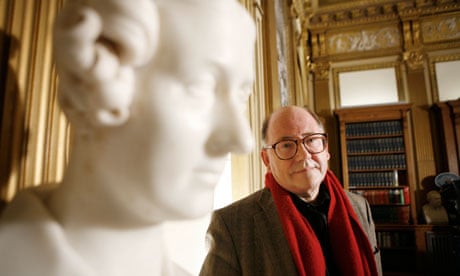


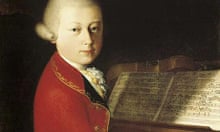
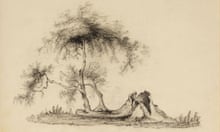
Comments (…)
Sign in or create your Guardian account to join the discussion